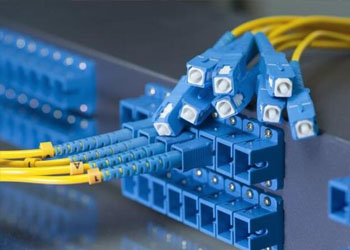1. Optical fiber is a thin and soft medium that transmits light beams. Most optical fibers must be covered by several layers of protective structures before application, and the coated cable is called a fiber optic cable. Therefore, the optical fiber is a key part of the optical cable, and the optical fiber is formed by the protection of some components with a protective layer attached.
The protective structure on the surface of the optical fiber can avoid damage to the optical fiber by the surrounding natural environment. Optical cables include optical fibers, buffer layers, and cladding. Optical fiber is similar to coaxial cable, except that there is no mesh shielding layer. The core is a light-diffusing laminated glass core.

Optical fibers are usually bundled and protected by a casing. The fiber core is usually a two-layer cylindrical shape with a small cross-sectional area made of quartz glass. Its material is brittle and easy to break, so an additional protective layer must be added. So their difference depends on that.
2. Optical cable: It is mainly composed of light guide (glass filament as thin as hair), plastic protective sleeve and plastic skin. There is no metal such as gold, silver, copper and aluminum in the optical cable, and generally has no acquisition and use value. Optical cable is a kind of communication network in which a certain number of optical fibers form a cable core according to a certain method, and is covered with a sheath, and some are also covered with an outer sheath, which is used to complete the transmission of optical signals. That is, the optical cable is produced by the optical fiber (optical transmission medium) through a certain process.
Advantages of optical cables Optical fiber cables are a new generation of transmission materials. Compared with copper materials, optical fibers have been greatly improved in terms of safety factor, reliability or network characteristics. The network bandwidth of optical fiber transmission greatly exceeds that of copper cables, and it is suitable for larger distances of more than two kilometers. Fiber optic cable has the advantages of good anti-interference signal, strong security, faster speed, and large transmission capacity.
These two different types of optical fibers are commonly used at this stage, namely single-mode optical fiber and multi-mode optical fiber. Multimode fiber is generally used for network connections in the same office building or in relatively close areas. The single-mode fiber transmits data with higher quality and longer transmission distance, and is usually used to connect to networks in office buildings or geographically dispersed. If the fiber optic cable is used as the network transmission material, it is necessary to upgrade the optical transceiver and other equipment.










